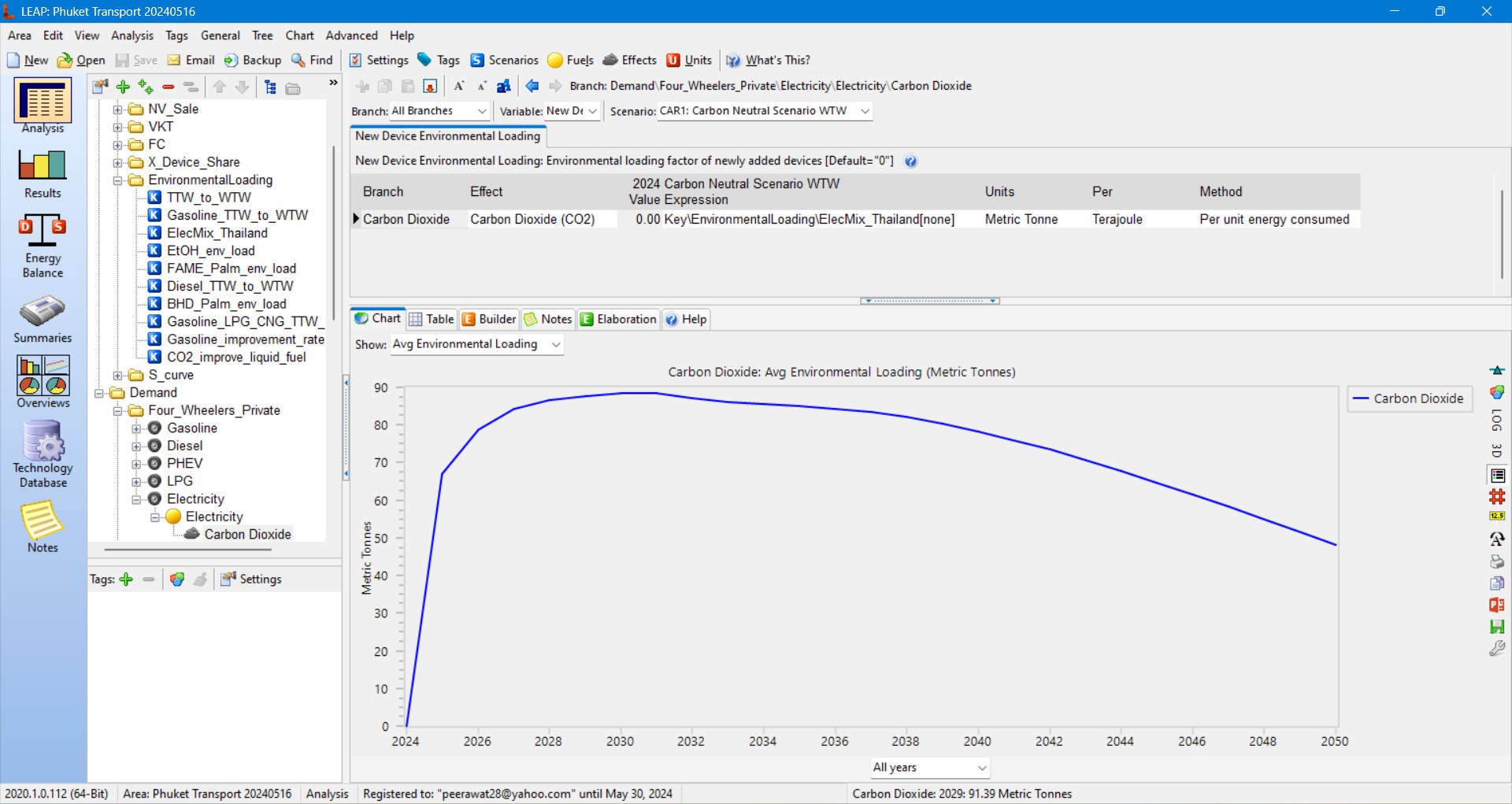Topic: LEAP Environmental Loading Subscribe | Previous | Next
Khemrath Vithean 1/16/2024
I set specific environmental loading factors for 2050 in my project, including a value of zero, but the software appears to be applying an average instead. Is there a way to force it to use my defined values?
Hi Khemrath -
It looks like you're trying to include year and value pairs inside an Interp() statement for years that are not part of the active scenario. If you want LEAP to use the value you specify for the year 2017 (and any interpolated values from 2017 to 2022), then you need to enter your Interp() expression in Current Accounts, which is where you adjust assumptions for 2017 to 2022. Instead, you've entered your expressions in your CAR1 scenario, which only affects years 2023 to 2060.
Taylor
Hi Taylor,
I'm working on calculating emissions from the transport sector and still face the same problem. By 2050, although my emissions factor is zero, energy-based emissions are still present. It appears that while the New Device Environmental Loading reaches zero in 2050, the Average Environmental Loading does not. I suspect this discrepancy is causing my electricity emissions to remain above zero.
Does you know how to adjust the calculation parameters in LEAP to use actual values instead of average values?
Hi Khemrath,
Again, make sure that you are entering those expressions for the New Device Environmental Loading in the "Current Accounts" scenario.
Also, note that because you are using a stock turnover analysis method, the environmental loadings you specify in that variable correspond to those for newly added vehicles. In the lifecycle profile, you should describe how environmental loadings change as vehicles age. LEAP calculates the stock average
values for environmental loadings across all vintages
and hence, ultimately, the overall level of environmental
loadings.
So based on your numbers, even though vehicles added in 2050 will have zero emissions, the older vehicles which are still part of the stock in 2050, will be generating emissions.
I suggest you take a look at Exercise 6 in the LEAP training manual, particularly the sections that relate to emission factors.
Regards,
Silvia
Hi Silvia,
Thanks for the detailed explanation of the concept. I will try to check out exercise 6 and come back to you later if I still have any problem.
Sincerely thanks,
Sincerely thanks,
Khemrath





